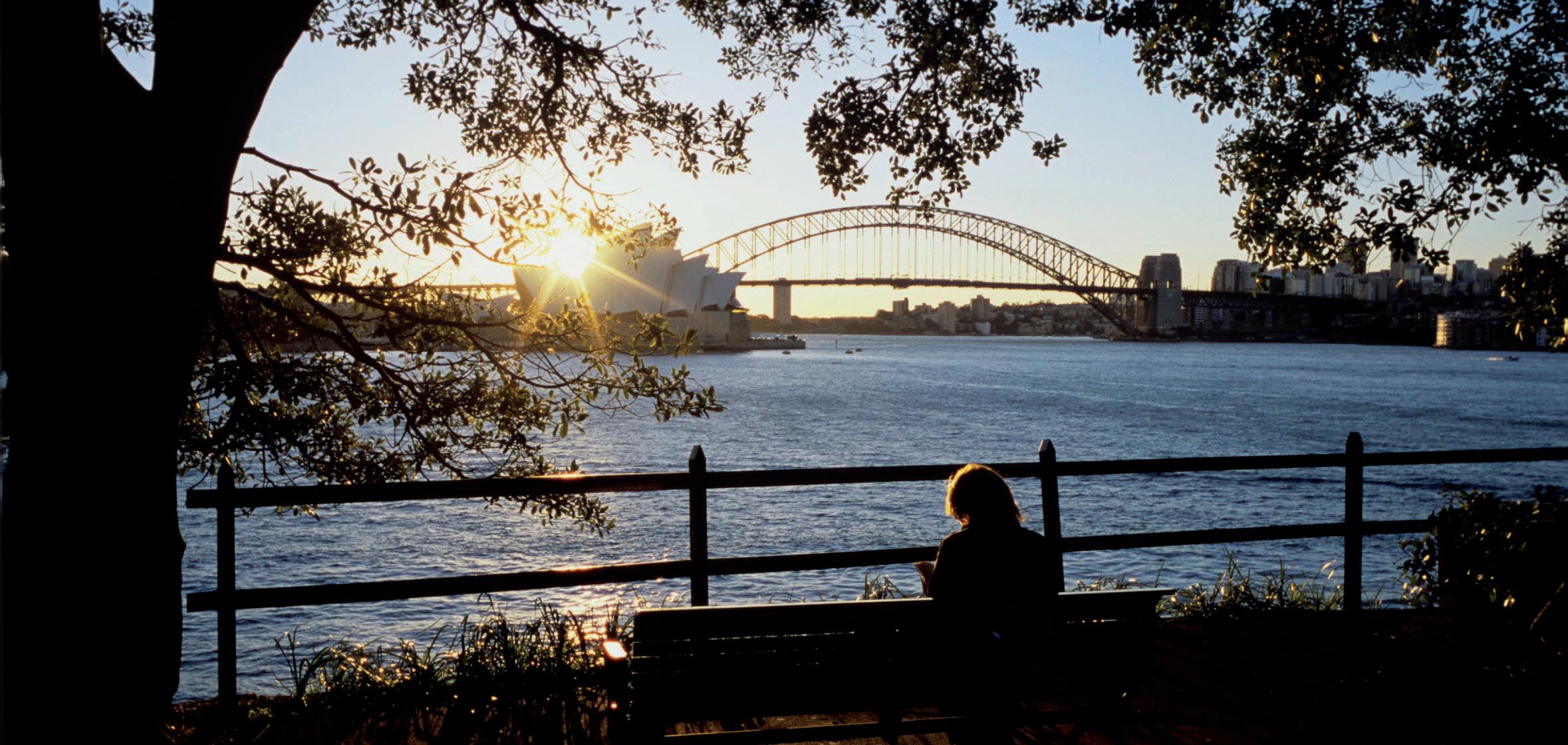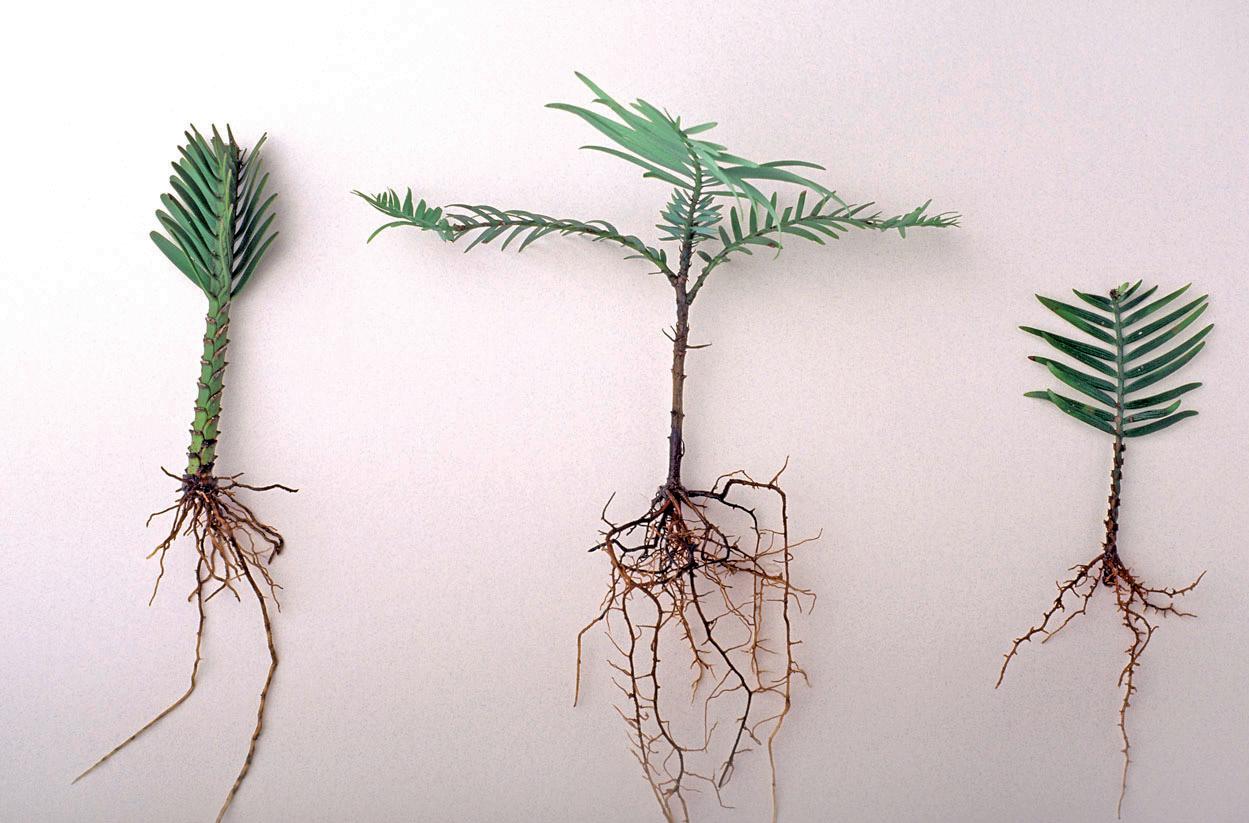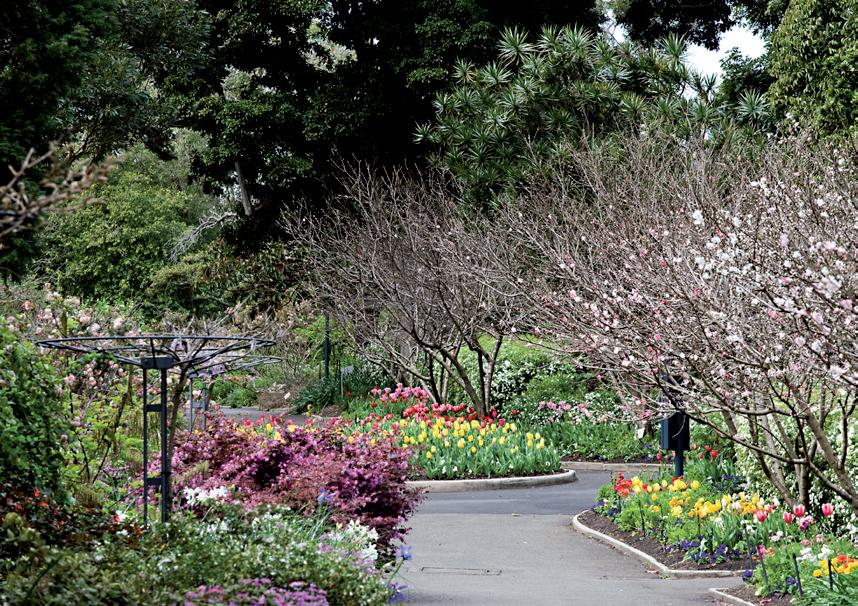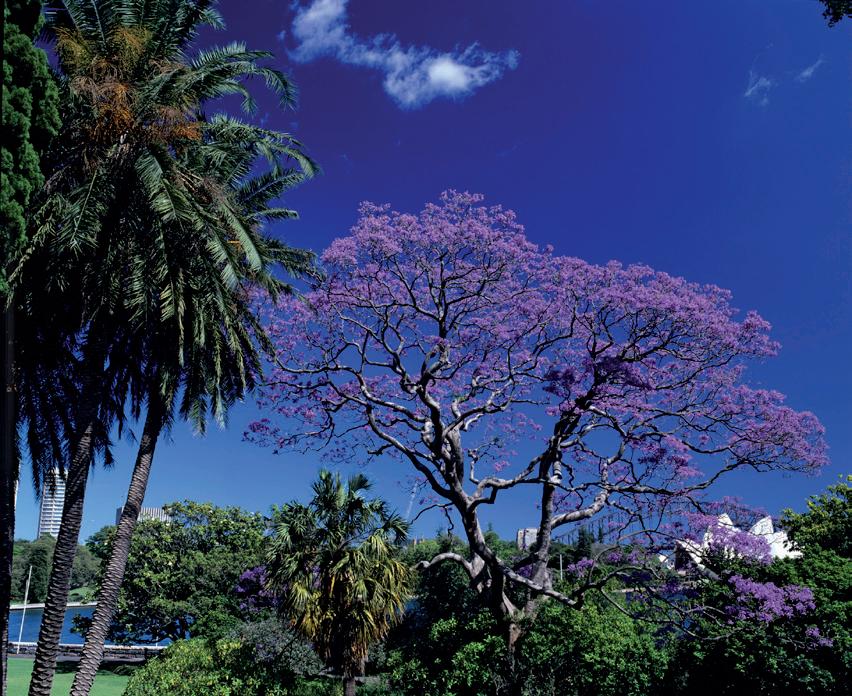
3 minute read
sYdNEY royAl botAnic gArdens
from 2012-01 Sydney (2)
by Indian Link
Australia’s first farm has gone on to become a world of botanical splendour

BY PETRA O’NEILL
The Royal Botanic Gardens is an oasis right in the heart of Sydney, at Farm Cove. Originally known as Woccanmagully by the Cadigal aboriginals who lived there, Farm Cove got its name after the arrival from England of the First Fleet, 11 ships that in 1788 transported 1373 sailors, soldiers and convicts to establish a penal colony. Australia’s first farm of wheat, corn, barley and rye was established alongside land declared the Governor’s Domain, a private reserve for the country’s first governor, Governor Arthur Phillip.
When Governor Lachlan Macquarie arrived in 1810, he saw the potential for a great city rather than a penal colony. He was the driving force behind civic improvements including founding the Botanic Gardens in 1816, and constructing Macquarie Street and Mrs Macquarie’s Road that led to a chair or step cut into sandstone where Elizabeth Macquarie came to enjoy the harbour.
With the appointment of the first Colonial Botanist in 1817 to collect and study plants, the Botanic Gardens became Australia’s first scientific institution.
Under Charles Moore, Director from 1848-‘96, much of the gardens were developed in the form we know today. Moreton Bay figs and palms were planted, while azaleas, rhododendrons and land was reclaimed behind the Farm Cove seawall. In 1862, Sydney’s first zoo opened here until 1883, and in
1879 the Garden Palace, a grandiose example of Victorian architectural exuberance, with towers and turrets around a giant dome dominated the skyline and covered two hectares. The International Exhibition held in the Garden Palace attracted over one million visitors. The building was destroyed by fire in 1882 and the land was added to the Botanic Gardens.
A herbarium opened in 1901 with later additions to the gardens including the Rose Garden, Fernery and Oriental Garden. The original native vegetation of red gums, acacias, paper barks, swamp oaks and Port Jackson figs now cohabit with thousands of exotic plant species collected on voyages of discovery around the world. While earlier features like the zoo have long disappeared, the Lion’s Gate, Lecture Hall and many statues have remained. The most visited areas of the gardens today are the Tropical Centre and the Wollemi pine: several of the species Wollemia nobilis, once thought to be extinct, were discovered in 1994 in sandstone gorges near Sydney, and one was replanted in the Gardens.
The first Governor’s residence was a portable canvas house brought by Captain Arthur Phillip from England on the First Fleet. A twostorey residence soon replaced this and served as home to the first nine Governors. In 1816, Governor Macquarie commissioned architect Francis Greenway to build the Government Stables, now the Conservatorium of Music. His successor Governor Bourke considered no colonial architect was worthy of building Government House and instead commissioned Edward Blore, architect to King William IV. The building was dining room, drawing room and ballroom, contain an outstanding collection of 19th and early 20th century furnishings.
In 1996 Government House was opened to the public. Since then hundreds of thousands of people have visited the grounds and toured the house.
The Royal Botanic Gardens, Sydney is more than just a beautiful place for us to enjoy. It is a treasure trove of our plants and their history, and an example of the importance of sustaining our city for future generations.
Further information
1857: First game of first class cricket in NSW was played in the Domain. First game in Australia was played the previous year in Melbourne.
1910-‘67: Several tortoises lived in the gardens.
1945: Appointment of the first Australian Director.
Number of plants in the Royal
In 1862, Sydney’s first zoo opened here until 1883, and in 1879 the Garden Palace, a grandiose example of Victorian architectural exuberance, with towers and turrets around a giant dome dominated the skyline and covered two hectares.
Botanic Garden: 45,124.

Number of preserved plant specimens in the Herbarium: Over one million.
Oldest planted trees in the Royal Botanic Garden: Hoop Pine, Giant Watergum, both planted c. 1820‘28 in the Palm Grove.
Oldest plant specimens: Collected at Botany Bay in 1770 by Joseph Banks.
Size of gardens: 30 hectares.
Size of Domain: 34 hectares.
Number of visitors: 3 million (Royal Botanic Gardens) and 4 million (Domain) per year.
Hours of opening: The Royal Botanic Gardens are open daily from 7am to sunset.




Phone: 9231 8111 website: www. rbgsyd.nsw.gov.au

The gardens of Government House are open from 10am to 4pm daily and the house is open Friday to Sunday from 10.30am – 3pm (access by free guided tour only. Closed during vice regal events)
Phone: 9931 5222 website: hht.net.au
Getting there
The Royal Botanic Gardens can be accessed from gates along Macquarie Street, the Opera House promenade or Mrs Macquarie’s Road. Take a train to Martin Place or Circular Quay, numerous buses pass close by or catch a ferry to Circular Quay. There is no parking within the gardens. Limited metered parking is available on Mrs Macquarie’s Road and nearby streets.
Dining
Bring a picnic hamper to gain the most from your visit. There are kiosks, a cafe, the Royal Botanic Gardens Restaurant and Pavilion Restaurant. Nearby Chifley Plaza provides several reasonably priced restaurants and cafes undercover.
Insider tips
Download or pick up a map as you enter. On weekdays from 11.30-2.00, visit the Growing Friends Nursery for plants grown by volunteers, many of whom are horticulturalists and always willing to offer advice. If you would prefer not to walk around the gardens, hop onboard the trackless train.
In the vicinity
The Museum of Sydney (entry fee), State Library and Art Gallery of NSW always have exhibitions of interest and several dining options.










